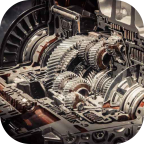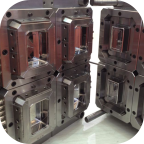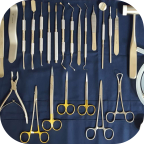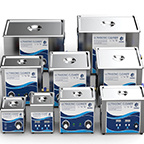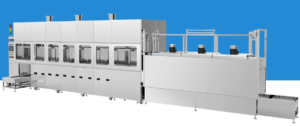Harnessing the Power of Ultrasonic Technology in Industrial Machines
Browse Volume:47 Classify:Support
The Role of Ultrasonic Technology in Modern Industry
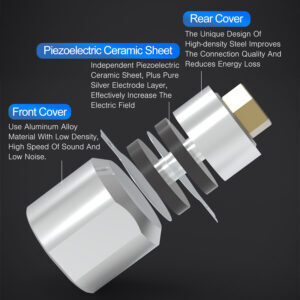
Ultrasonic technology has revolutionized various industrial sectors by providing precise, efficient, and non-invasive solutions for numerous applications. From cutting and welding to cleaning and testing, ultrasonic industrial machines harness high-frequency sound waves to improve manufacturing processes. These machines operate using ultrasonic waves, typically ranging from 20 kHz to several MHz, to perform tasks that traditional mechanical methods cannot achieve with the same level of accuracy and efficiency.
How Ultrasonic Industrial Machines Work
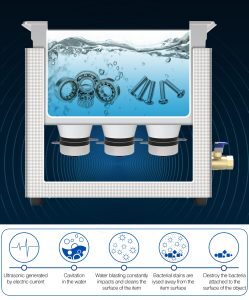
Ultrasonic machines function by generating high-frequency vibrations through piezoelectric transducers. These transducers convert electrical energy into mechanical vibrations, which are then transmitted to the workpiece through a tool or medium, such as water or air. The intense vibrations create localized energy that can break contaminants apart, weld materials together, or cut through dense materials with minimal resistance.
The key components of an ultrasonic industrial machine include:
- Ultrasonic generator – Converts electrical power into high-frequency signals.
- Transducer – Converts electrical signals into mechanical vibrations.
- Booster (if applicable) – Amplifies the ultrasonic vibrations.
- Sonotrode or horn – Directs the vibrations to the target material.
These machines offer remarkable precision and control, making them ideal for industries that require fine detailing, such as medical device manufacturing, electronics, and aerospace engineering.
Common Applications of Ultrasonic Industrial Machines
Ultrasonic technology is widely utilized in various industrial applications, each taking advantage of the unique properties of high-frequency sound waves.
1. Ultrasonic Welding
Ultrasonic welding is a fast, reliable method of bonding materials, particularly plastics and thin metals. Unlike traditional welding, which relies on heat, ultrasonic welding uses vibrational energy to create molecular bonds. This method is extensively used in the automotive, medical, and electronics industries due to its ability to produce strong, high-quality welds without requiring additional adhesives or fasteners.
2. Ultrasonic Cutting
Industries that require precision cutting, such as food processing and textile manufacturing, benefit from ultrasonic cutting machines. These machines use a vibrating blade to slice through materials with minimal pressure, resulting in clean, smooth edges. This technology is particularly valuable in food production, where maintaining product integrity and hygiene is crucial.
3. Ultrasonic Cleaning
Ultrasonic cleaning is a highly effective method for removing contaminants from delicate objects. By immersing items in a cleaning solution and applying ultrasonic vibrations, microscopic bubbles form and collapse, dislodging dirt, grease, and debris from intricate surfaces. This method is commonly used in laboratories, jewelry manufacturing, and automotive maintenance.
4. Ultrasonic Atomization and Spraying
Ultrasonic atomization enables precise and uniform spraying of liquids, making it invaluable in applications such as medical coatings, agricultural spraying, and electronics manufacturing. Unlike traditional nozzles, ultrasonic sprayers generate fine droplets with controlled dispersion, reducing material waste and improving efficiency.
Advancements and Future Prospects of Ultrasonic Industrial Machines
With continuous advancements in materials science and digital automation, ultrasonic industrial machines are becoming more sophisticated and versatile. Emerging trends include:

- AI-driven ultrasonic systems – Machine learning algorithms enhance process control and optimize ultrasonic parameters for different applications.
- Miniaturization of ultrasonic devices – Portable ultrasonic welders and cleaners allow for on-the-go industrial applications.
- Eco-friendly ultrasonic solutions – Reduced energy consumption and chemical-free cleaning methods contribute to sustainable manufacturing.
As industries demand greater precision and efficiency, the integration of ultrasonic technology is expected to expand, further transforming manufacturing and quality control processes across various sectors.
References
- Ensminger, D., & Bond, L. J. (2012). Ultrasonics: Fundamentals, Technologies, and Applications. CRC Press.
- Padhy, G. K., & Zhang, W. (2016). Ultrasonic Welding of Advanced Materials: A Review. Journals of Manufacturing Processes, 23, 221-237.
- Culjat, M., Goldenberg, D., & Tewari, P. (2010). Clinical and Industrial Applications of Ultrasonic Technology. Ultrasonics, 50(3), 379-385.
- IEEE Transactions on Ultrasonics, Ferroelectrics, and Frequency Control. (2021). Advances in High-Power Ultrasonic Applications.
 GranboUltrasonic
GranboUltrasonic

